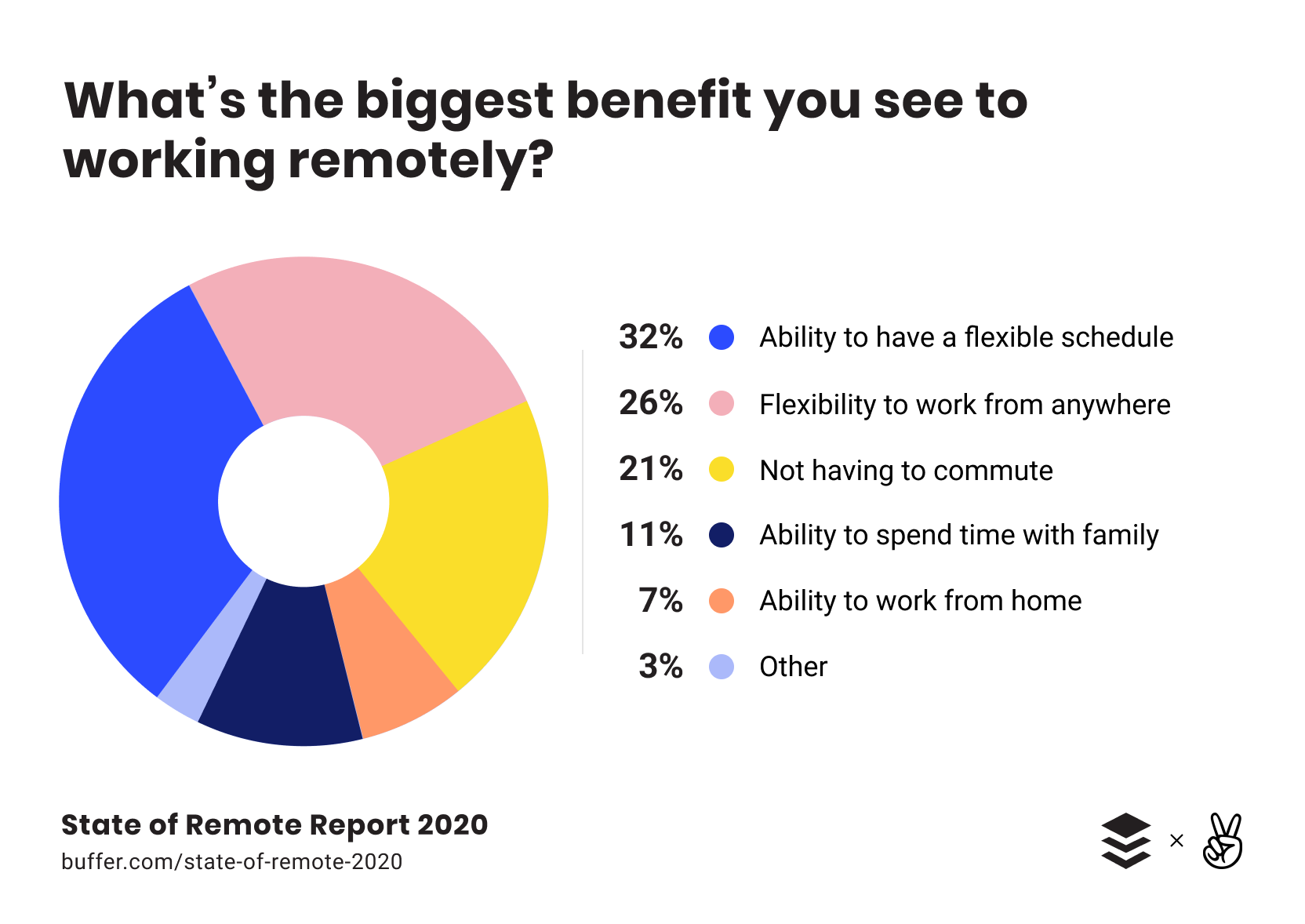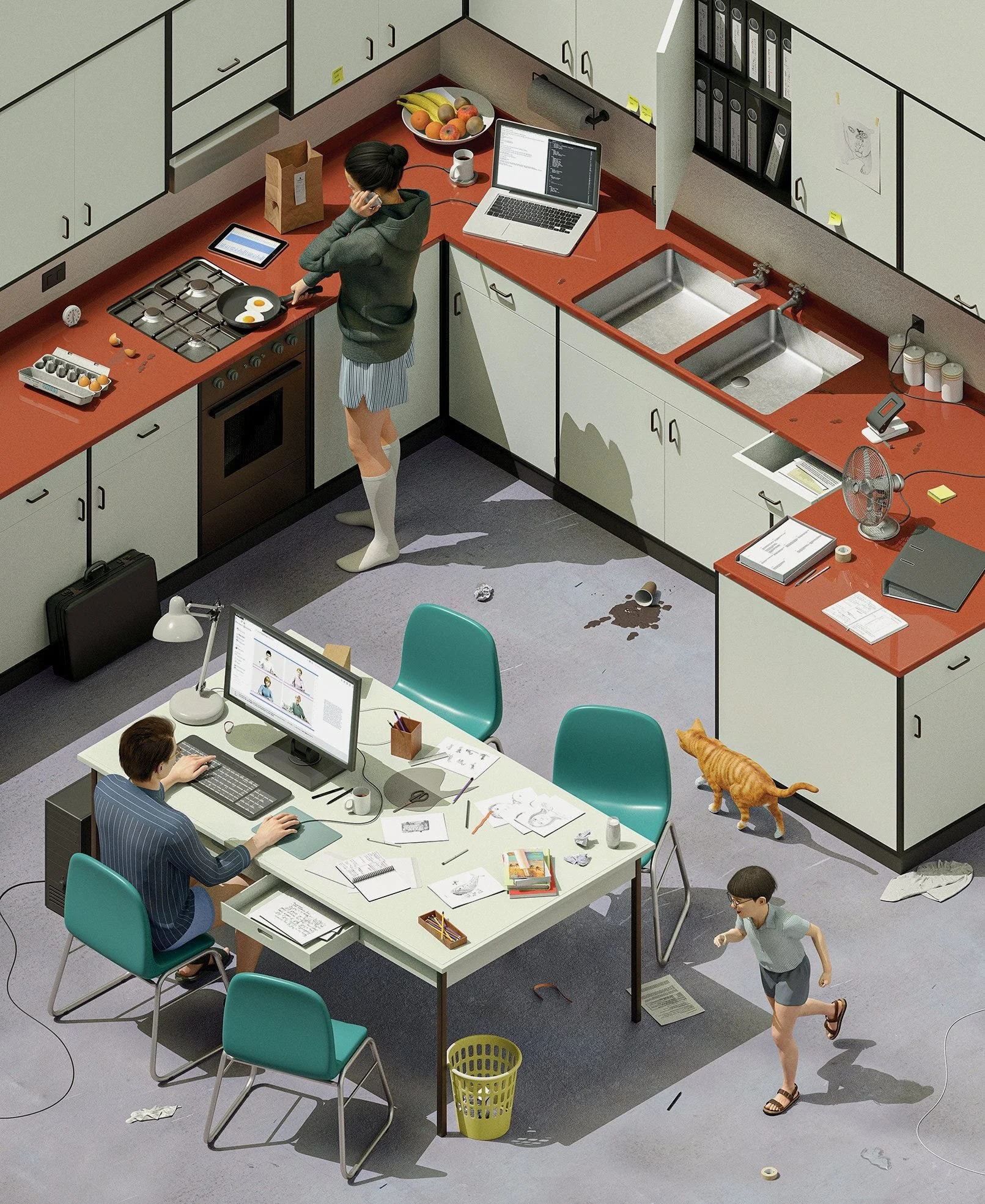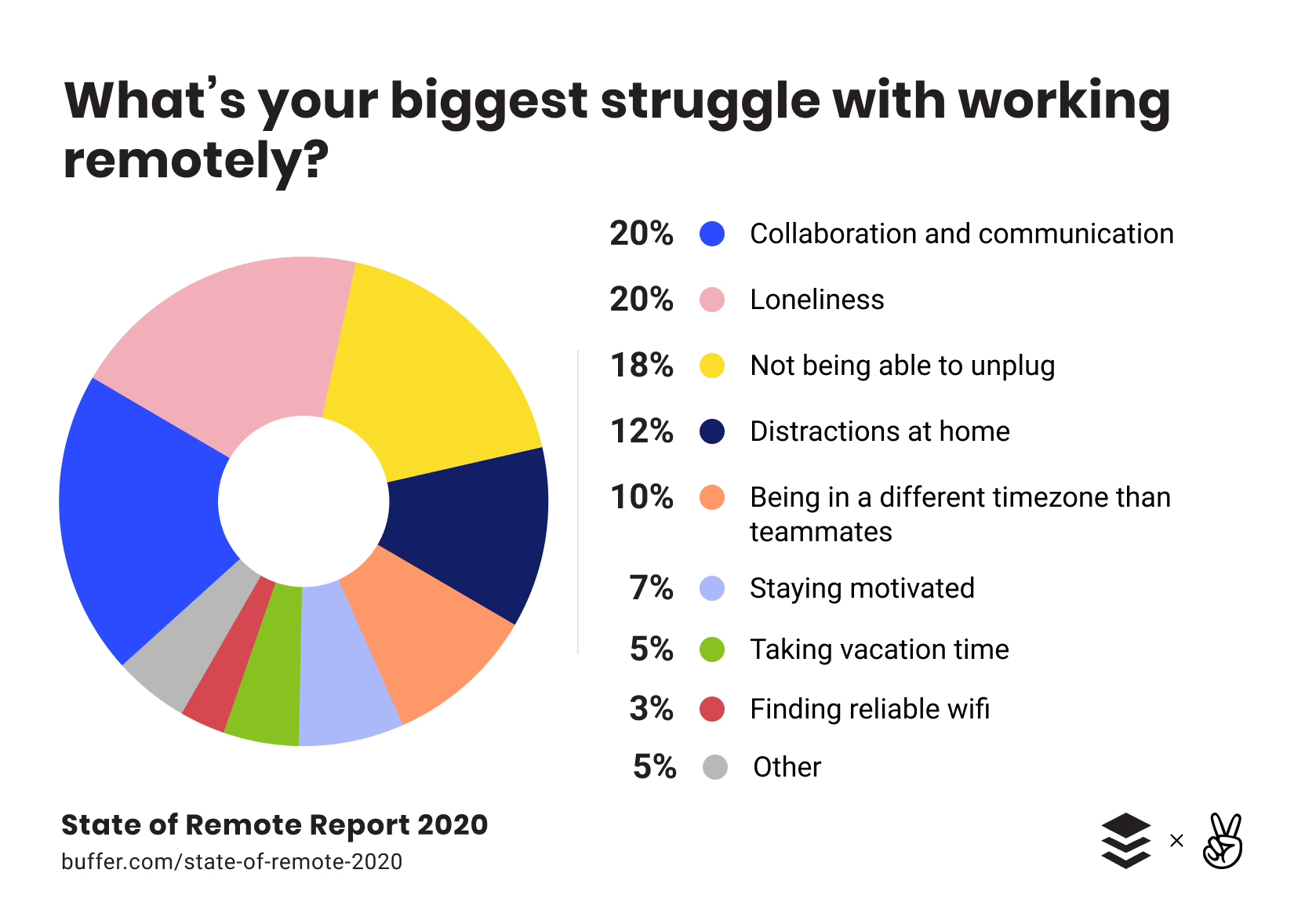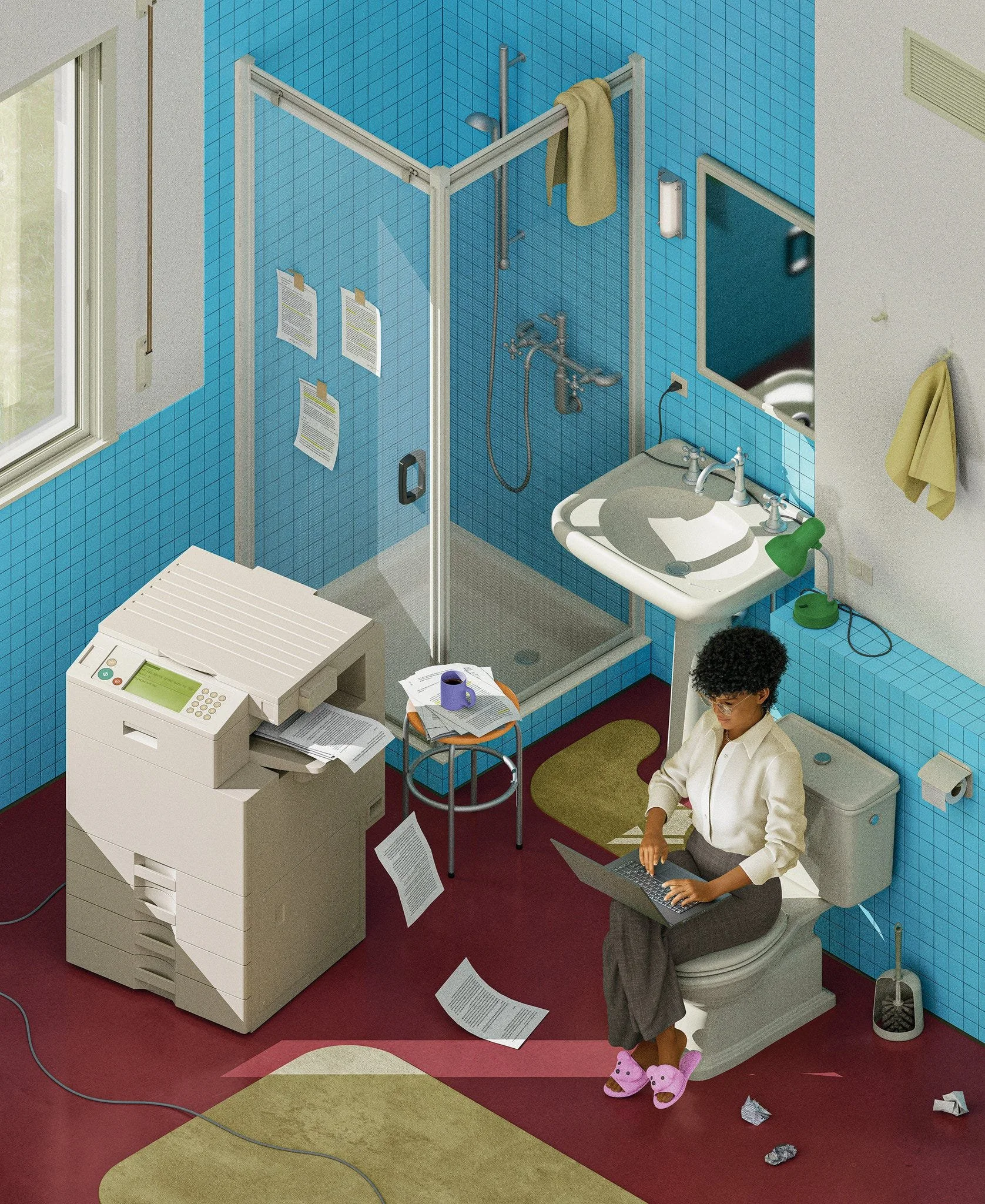WhenRemoteWorks...and When It Doesn't
My remote work journey started by accident.
It was 2012 and I worked for the infamous consulting firm, Deloitte. Like many consultants, I was well-adjusted to the 4:1 schedule—four days onsite with your client, 1 day in the office. But this was different. I reported directly to the CTO of Deloitte and, while I had counterparts in other areas of the organization, I was on an island.
Suddenly my job involved international communication and leadership. Not only did I need to adjust my communication patterns, but I also had to move my entire schedule, learn new tools and systems, and lead new teams. The changes were growth opportunities for me personally and professionally. But it wasn’t all roses.
With work spread across five different time zones, I adopted the schedule of both a night owl and an early bird, starting my day around 5 am and taking my last call at 11:30 pm. While this sounds like torture to most people, I loved it. It gave me the flexibility to get five hours of work done before most of my Seattle colleagues had finished their first cup of coffee. If I wanted to get a midday workout in, I could easily make time.
The downsides crept in slowly. While I was traveling or working remotely, most of my colleagues were still in the office. This is where isolation started to take its toll.
During my infrequent trips to our physical office, I found I had lost the personal connection with my colleagues. They were interacting face-to-face every day, while I was communicating digitally. They no longer understood my role and probably wondered if I was actually working at all.
This was particularly challenging for me, as I was working incredibly long hours and working hard to make an impact. It was obvious to my international counterparts, but not to my local colleagues. The feeling of isolation set in, and I found it increasingly hard to balance the challenge of working remotely.
This would be the beginning of a longstanding relationship with the psychological challenges of remote work.
Whether it’s Zoom fatigue, the never-ending workload, or just the additional anxiety of creating and maintaining boundaries for work-life balance, I’ve experienced it all. And though these challenges can be difficult, they are addressable. And honestly, the better we understand the new challenges of remote work, the more likely we are to find meaningful, scalable solutions.
#WhenRemoteWorks
Last week I wrote about remote hierarchies, which are the three primary strategies for companies embracing remote work:
Remote Hierarchies
1. The Crusaders (aka remote-only/first)
2. The Decentralized (aka remote-plus)
3. The Entrenched (aka remote-last)
After that post, a funny thing happened. When I logged onto Twitter to engage in my usual scrolling and eye-rolling, I noticed the #WhenRemoteWorks hashtag trending. My first thought was “this seems like an interesting thread.” The thought was immediately followed by a judgment-laden inquisition into the origin and rationality of this tweet (below).
I wondered: if remote work is so much better, why then, would we need to describe the conditions of successful implementation?
Fortunately, as a longstanding remote worker, I had a hunch. It’s easy for us to forget that, prior to the COVID-19 pandemic, employers and employees waxed and waned when it came to supporting remote work. The prominent advocates of distributed and remote work were startups and individual, tech-centric employees looking for increased flexibility, autonomy, and cost-savings.
As indicated in The 2020 State of Remote Work study by Buffer, the numbers consistently favor increased support for remote work, with nearly 98 percent of respondents agreeing with the statement below.
Perhaps unsurprisingly, the key benefit of remote work has remained the same for nearly three years: flexibility.
Whether it’s the ability to have a flexible schedule, the flexibility to work from anywhere, or the ability to work from home, every benefit listed can be traced back to flexibility.
Flash forward to 2020 and the questions about the viability and scalability of remote work have all but gone away completely.
It’s official—remote work is here to stay.
But we’re still working out the kinks in the new system.
#WhenRemoteDoesn’tWork
While many of us have been fortunate enough to have the ability and option to continue working from home, a lot of people are struggling to find their rhythm.
The Big Three
Remote work comes with unprecedented side effects for employees. Researchers find that work hours blur with non-work hours, creating additional anxiety and stress for employees. Whether it’s collaboration issues, loneliness, or the inability to unplug, remote workers are bearing the burden of work. And it’s getting heavier each day.
Now, the question is: what can we do to improve mental health and productivity?
Before we start solutioning, we need a firm understanding of the problem.
Collaboration and Communication
Meetings have long been a polarizing element of the corporate culture; they’re loved by managers and despised by employees. Ashley Willis’ tweet perfectly reflects the thrilling feeling we experience when we’re magically gifted time for productive work outside of the stale setting of a corporate meeting. 👇
Most employees value collaboration and communication, but maybe we’ve finally taken it too far.
During the recent transition to remote work, companies have been forced to evaluate which meetings are truly required for maximum productivity. Because, let’s be honest, we’re all focused on productivity at the moment.
In the early days of the COVID-19 pandemic, employees attempted to replicate their existing in-office schedule, adding everything from standup to happy hours and “random chats” to their daily calendar. Most people quickly realized that video chat is not as seamless as in-person communication—wifi signals drop, timing is always delayed, lighting is distracting, and our mics are perpetually spotty. As time in quarantine expanded, many realized that this was an unsustainable and, honestly, exhausting way to exist.
Enter: text-based communication.
Just as text messaging overtook phone conversations, people are now relying on tools like Slack and Microsoft Teams to keep a running dialogue, document decisions, and mimic in-person interactions. These ‘chats’ come with their own unique set of challenges, including the decimation of all reasonable work-life boundaries. It’s impossible to be offline if your primary communication tool is always on.
Loneliness
As meetings erode their position as the primary marker of our day, people experience more time “away,” pushing communication to tools like Slack and Teams. Each of these tools is great for increasing the perception of communication, without actually helping users feel like they’re really connecting. They reduce everything to its most efficient, transactional state. A Slack conversation might look something like this:
Sam: How’s the design proposal going?
Gene: Great! I should have it ready by EOD.
Sam: Ping me when it’s done.
Gene: 👍
Imagine this conversation taking place in a physical office. There’s a good chance this could be misconstrued as unnecessarily curt. At best, it could be categorized as accurate and efficient.
The point is: we’re pushing away from each other, not coming together.
While remote workers are learning to cope with isolation, this plays into a broader trend. Studies have shown that loneliness is on the rise in young adults, many of whom are entering a workforce that is likely to be remote-dominant for the foreseeable future. The same survey noted that people who engage in frequent meaningful in-person interactions have lower scores of loneliness.
Though I believe isolation is manageable, we need to prepare for a society without in-person engagement.
Not being able to unplug
One of the most important and underrated factors of traditional office work is the ability to unplug. When you leave, it doesn’t follow you. It’s the foundation, firmly pinned in place, awaiting your return. Though you have the option to bring it home or stay online, it is just that—an option. Remote work does not provide that option. You are the office. Forever.
Being always-on is not healthy. Why do you think people are looking for meditation retreats and digital detox sessions? People will go to great lengths to escape the always-on culture we’ve created. Working longer hours was once a marker of success, grit, and productivity. Now it’s a sign: you’re headed for a cliff.
Furthermore, it’s not even productive. We trick ourselves into believing that downtime is not productive, but the data says otherwise. Periods of downtime are critical for the brain’s subconscious processes, which boost memory and problem-solving skills.
Filling The Remote Gaps
Remote work is often touted as a benefit for mental health and work-life balance. “You’ll be your own boss,” they said. “You’ll set your schedule” they claimed. “You’ll work when, where, and—for the most part—how you want.”
They were right, but not completely accurate.
As many workers have discovered, remote work can be a difficult and often depressing environment. It’s easy to start feeling isolated, stuck at your desk hours on end, without the natural cutoff point that physically leaving the office provides. While mental health means different things to different people, we all need to find ways to stay connected and create a global culture of support.
According to a recent study, about two-thirds of businesses that have adopted remote work policies plan to keep at least some of those policies permanently. With more and more companies going remote, employers and employees need to realize that the effects of remote work could have damaging effects if not appropriately addressed. Employees need to learn how to block and tackle in order to take control of their environment and maintain work-life balance.
It’s easy to assume that the shift to remote work will be better for everyone. It won’t. Many will suffer in the transition. More will be displaced. Gaps will grow wider.
We need to accept that remote work is not inherently better for everyone. It’s different, and different doesn’t always mean better.
Some workers suffer professional costs that may be difficult to recover from or require a completely new career path. Others are forced to manage psychological changes that may not support their individual preferences or needs. Some people will find remote work incredibly fulfilling, while others will face a new kind of hell.
Not everyone is ready to give up the physical office. The underlying truth is that, as inefficient as traditional offices are, some people will prefer that experience. Our ability to recreate those elements that benefit certain employees is limited, but important to the next wave of company culture. Employees have adapted to a certain lifestyle and they long for the tricked-out kitchens, the nice couches, and open collaboration spaces. More than ever, they seek separation from their home. Furthermore, employees are seeking something we all need: space.
The need for a space to collaborate and socialize with colleagues is incredibly important for many remote workers. The loss of hallway conversations and ad-hoc interactions seems trivial, but for some it’s critical. Going forward, we can expect office life to be less about productivity and more about collaboration, socialization, and escaping the day-to-day work-from-home culture.
We need empathy for those who find remote work fulfilling and a path to better work-life balance. We also need empathy for those who need a different environment. Whether it’s psychological, financial, or emotional, we need to create space to breathe. People need the freedom to cognitively detach and focus on family and friends, go relax, or separate feelings and emotions experienced during a workday, such as missing your child or dealing with a tough interaction with a coworker.
The world is hard enough, so be kind to one another—that’s #WhenRemoteWorks.




